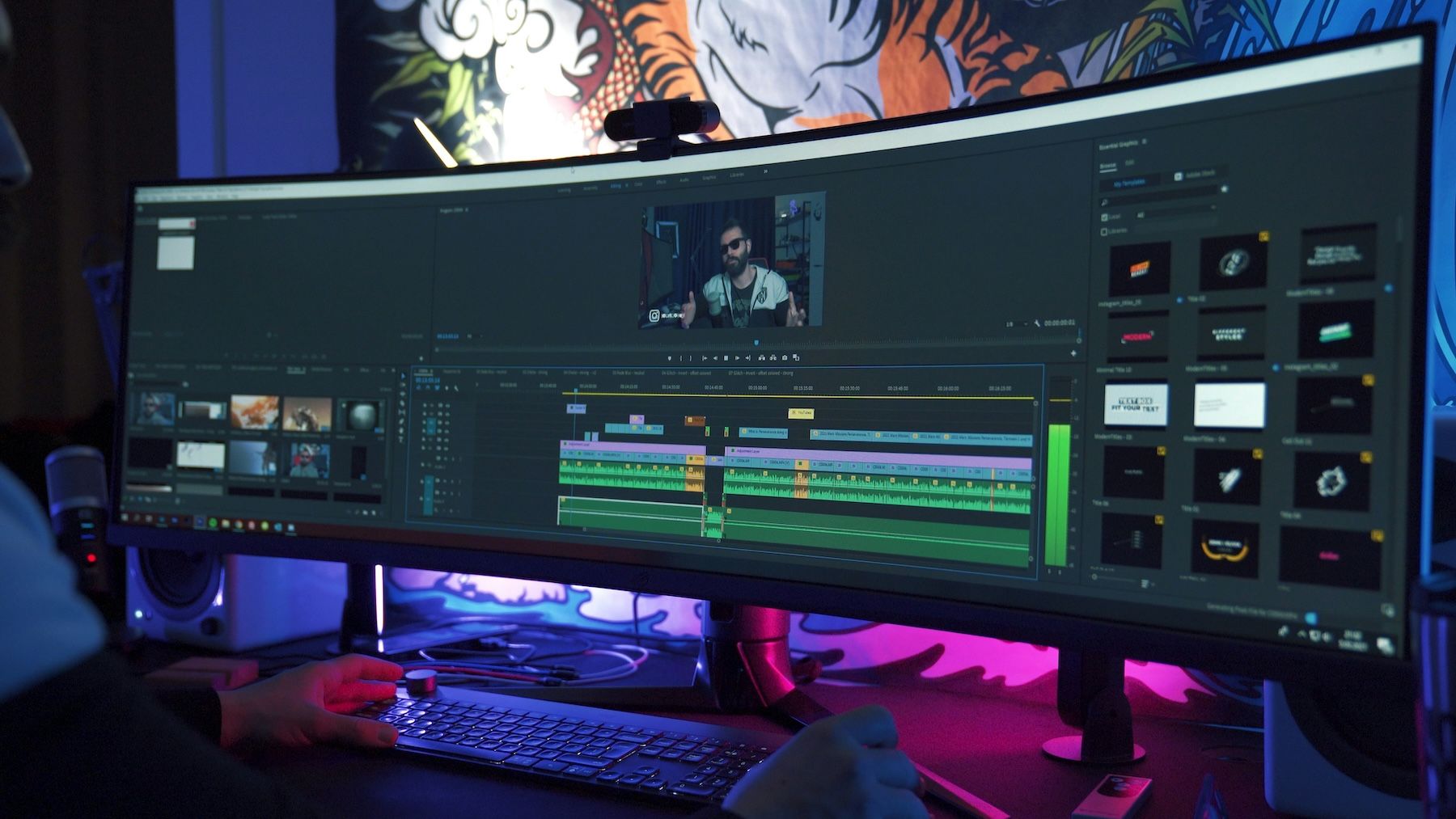Frame rate is a fundamental concept in digital media, significantly influencing our visual experiences across various platforms and technologies. Whether you're streaming your favorite Netflix series, playing the latest video games, or creating professional video content, understanding frame rate is essential for both content creators and consumers. This comprehensive guide will explore the complexities of frame rate, its testing methods, and its impact on contemporary digital content consumption.

What is Frame Rate?
Frame rate, commonly known as FPS (frames per second), indicates the frequency at which consecutive images are displayed on a screen. This essential concept has evolved significantly since the early days of cinema, where 24 FPS was the standard. In today's digital landscape, higher frame rates are often required to provide smooth and immersive experiences across various platforms and devices.
The development of frame rate technology spans over a century:
- Early Cinema (1920s): 24 FPS became the standard due to its balance between cost and visual quality.
- Television Broadcasting (1950s): Various standards emerged, including NTSC at 29.97 FPS and PAL at 25 FPS.
- Modern Gaming (2000s-Present): 60 FPS became the minimum standard for smooth gameplay.
- Current Trends (2020s): High-refresh-rate displays now support 120 FPS and even higher rates.
Each of these stages in the evolution of frame rates has presented new challenges and opportunities, shaping how we create and consume visual content today.
How Does Frame Rate Work?
Understanding frame rates requires insight into both human perception and technical implementation. The human eye and brain process visual information in a complex way, creating the illusion of continuous motion from a series of individual images. This phenomenon, known as persistence of vision, occurs when individual frames are displayed in rapid succession. This biological response interacts with frame rates to shape our viewing experience. Higher frame rates can offer a more detailed representation of motion, reducing motion blur and resulting in a more lifelike visual experience.
How to Test Frame Rate?
Testing frame rate is an important step in evaluating the smoothness of videos, games, or animations. Here are several common methods to test the frame rate:
- Using Frame Rate Monitoring Tools: Many games and video playback software come with built-in frame rate monitoring features. To enable this function, access the settings to view the frame rate in real-time. For example, in Steam, open the client and log in. Click on "Steam" in the top-left corner, then select "Settings" (or "Preferences" on macOS). Go to the "In-Game" tab, locate the "In-game FPS counter" option, and choose its position on the screen from the drop-down menu. Click "OK" to save your changes. The frame rate counter will appear when you launch a game.
- Third-Party Software: There are several specialized tools available to help you test frame rate, such as FRAPS, MSI Afterburner, and NVIDIA FrameView. These tools can display real-time frame rates during gameplay or video playback while providing detailed performance data.
- Recording and Analyzing: You can use screen recording software to capture gameplay or video playback and then analyze the recorded footage using video editing software. This method allows you to assess frame rate variations in different scenarios.
- Benchmark Testing: Some games and applications offer benchmark testing options that allow you to run tests under various settings and record the frame rate. This method helps you compare the impact of different hardware configurations or settings on frame rate.
By using these methods, you can effectively test and evaluate the frame rate of content, ensuring an optimal visual experience.
Impact of Frame Rate on Different Industries
1. Gaming Industry
In the gaming industry, frame rate plays a crucial role in the overall experience. In competitive gaming, higher frame rates provide significant advantages, such as smoother gameplay and quicker reaction times, which can be the difference between winning and losing. For mobile gaming, developers must balance battery life with performance, as higher frame rates can drain battery faster. Console gaming often targets fixed frame rates to ensure a consistent experience across all devices, providing a stable and enjoyable experience for players.
2. Film and Video Production
Frame rate is also a key consideration in film and video production. Traditional filmmaking involves artistic choices in frame rate selection, with directors choosing different frame rates to achieve specific visual effects. In sports broadcasting, high frame rates are essential for slow-motion replays, allowing viewers to see every detail of the action. Streaming services use adaptive frame rates to accommodate varying network conditions, ensuring smooth playback for viewers regardless of their internet speed.
3. Virtual Reality
In virtual reality (VR), maintaining a high frame rate is critical for a comfortable experience. A minimum of 90 FPS is often required to prevent motion sickness and provide a seamless experience. The impact of frame rate on motion sickness is significant, as lower frame rates can cause discomfort and disorientation. Future developments in VR frame rate technology aim to further enhance the immersive experience by pushing frame rates even higher.
Optimizing Frame Rate Performance
- Hardware Optimization: To optimize frame rate performance, hardware optimization is essential. This includes updating GPU drivers to ensure compatibility with the latest games and applications, improving system cooling to prevent overheating, and upgrading hardware components when necessary to handle more demanding tasks.
- Software Settings: Adjusting software settings can also help optimize frame rate. Lowering the resolution can reduce the strain on the GPU, while using graphics quality presets can balance performance and visual fidelity. Enabling V-Sync and frame limiting options can prevent screen tearing and provide a smoother experience.
- Content Creation Considerations: When creating content, it's important to consider the target platform's capabilities and the audience's requirements. Balancing performance and quality is crucial, as higher frame rates can enhance the viewing experience but may require more powerful hardware. Understanding these trade-offs helps creators deliver the best possible experience for their audience.
In conclusion, frame rate has a significant impact across various industries, from gaming and film production to virtual reality. Optimizing frame rate performance through hardware and software adjustments, as well as considering the needs of the target audience, is essential for delivering high-quality experiences.
Future Trends and Developments
The future of frame rate technology shows promising developments that are set to revolutionize various industries. These advancements focus on providing smoother visuals and optimizing resource usage, ensuring a better experience for users.
1. Emerging Technologies
One of the key emerging technologies is Variable Refresh Rate (VRR). VRR allows for adaptive synchronization between the display and the content being shown. This means that the display can adjust its refresh rate in real-time to match the frame rate of the content, reducing screen tearing and stuttering for a smoother visual experience.
Another exciting development is AI-Enhanced Frame Generation. By using machine learning algorithms, this technology can create intermediate frames between existing ones. This process, known as frame interpolation, can significantly increase the perceived frame rate without requiring additional processing power from the hardware. As a result, users can enjoy smoother visuals while optimizing resource usage.
2. Industry Standards Evolution
The industry is also moving towards higher base frame rates. There is a growing trend to establish 60 FPS as the minimum standard for various types of content, including gaming, video production, and streaming. This shift aims to provide a more consistent and enjoyable experience for users across different platforms.
Format compatibility is another area of focus. As frame rate technology evolves, there is a need for improved support across various devices and platforms. Ensuring that high frame rate content can be seamlessly played on different systems will enhance the user experience and make high-quality visuals more accessible.
Enhanced compression methods are also being developed to handle high frame rate content more efficiently. These new techniques aim to reduce the file size of high frame rate videos without compromising quality, making it easier to stream and store such content.
In conclusion, the future of frame rate technology is bright, with emerging technologies like Variable Refresh Rate and AI-Enhanced Frame Generation leading the way. The evolution of industry standards towards higher base frame rates, improved format compatibility, and enhanced compression methods will ensure that users can enjoy smoother and more consistent visuals across various platforms. These advancements will undoubtedly shape the future of digital content consumption and production.
Conclusion
Frame rate remains a critical factor in digital content delivery and user experience. Understanding its principles, testing methods, and optimization techniques is essential for content creators, developers, and consumers alike. As technology continues to evolve, the importance of frame rate optimization will only increase, driving innovation in both hardware and software solutions.
The future of frame rate technology promises exciting developments in how we create, deliver, and consume digital content. Continued research and development in this field will likely bring new solutions to current limitations while opening up new possibilities for visual experiences.
TRTC (Tencent Real-Time Communication) excels in delivering superior frame rate performance. A standout feature is its capability to sustain high and stable frame rates, even amidst fluctuating network conditions. This ensures smooth and consistent video and audio quality, which is essential for applications like video conferencing, live streaming, and online gaming. Furthermore, TRTC employs advanced algorithms to optimize resource usage, effectively reducing latency and minimizing frame drops. This leads to a more seamless and immersive user experience, positioning TRTC as a dependable choice for real-time communication needs.
If you have any questions or need assistance online, our support team is always ready to help. Please feel free to Contact us or join us on Telegram or Discord. For technical problems, you can also get help directly from developers on Stack Overflow.
FAQs
Q: What is Frame Rate (FPS)?
A: Frame Rate, or FPS (Frames Per Second), is the number of consecutive images displayed per second in a video or game.
Q: What is considered a good frame rate for gaming?
A: For most gaming purposes, 60 FPS is considered smooth, while competitive gamers often prefer 120 FPS or higher for better responsiveness.
Q: Why does frame rate matter in videos?
A: Frame rate affects the smoothness and clarity of motion in videos, with higher frame rates providing more fluid movement and reducing motion blur.
Q: What's the standard frame rate for video content?
A: Most videos use 24-30 FPS for standard content, while 60 FPS is common for sports and gaming content.
Q: Can frame rates affect system performance?
A: Higher frame rates require more processing power from both CPU and GPU, which can impact overall system performance and heat generation.


